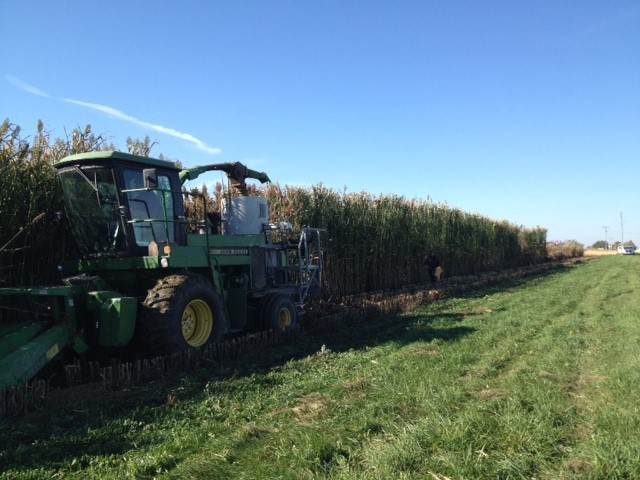Sorghum breeding program for biofuel production
Biofuels are a major contributor to the energy security of the United States, to the economic growth of Iowa and to the reduction of greenhouse gasses emission. The Energy Independence and Security Act (2007) established that 36 billion gallons of biofuels per year had to be produced by 2022. In 2018, 16 billion gallons of ethanol were produced from maize, but maize-based ethanol cannot supply the total demand and it has detrimental implications for food and feed supplies. Therefore, other sources, such as lignocellulosic feedstock, need to be developed.
In 2008, Dr. Salas Fernandez initiated the sorghum breeding program for biofuel production at Iowa State University. The main goal is to conduct research for the development of sorghum germplasm for biofuel production adapted to Iowa. The breeding program is centrally located in Ames, IA, with winter nursery activities in Puerto Rico and three testing locations in Iowa were experimental hybrids are evaluated every year.
Sorghum ethanol yields vary depending on the type of sorghum cultivated. Sweet sorghums can produce 900 gallons/acre, if we consider a standard composition, yields of 16 Tn of dry matter/ha and 90% conversion efficiency. Our yield trials demonstrate that biomass sorghum can produce up to 1,120 gallons/acre as a lignocellulosic feedstock, considering our highest yields of 35 Tn dry matter/ha, a standard composition and a 90% conversion efficiency. Therefore, sorghum could become the preferred bioenergy crop, considering its high yield potential and the additional benefit of low input use, since it requires less nitrogen and water than corn.
In addition to the ethanol production from corn grain, commercial lignocellulosic biorefineries are processing corn-derived biomass, a dry and low volume feedstock. Recent evidence suggests that the greenhouse gas (GHG) benefit of cellulosic ethanol from corn stover is marginal relative to fossil fuel production. Therefore, sorghum biomass could be used as a new source of cellulosic fuel with net GHG savings relative to corn stover. The advantage will be to produce biofuel with a reduced environmental impact and without competing for food production. Considering that storage and transportation of high-tonnage biomass with high water content is a major limitations to the development of a strong bioeconomy, anaerobic digestion (on-farm or at centralized facilities) is considered a promising conversion technology to generate biogas. The ISU sorghum breeding program is developing novel germplasm for these goals and processing methods.

